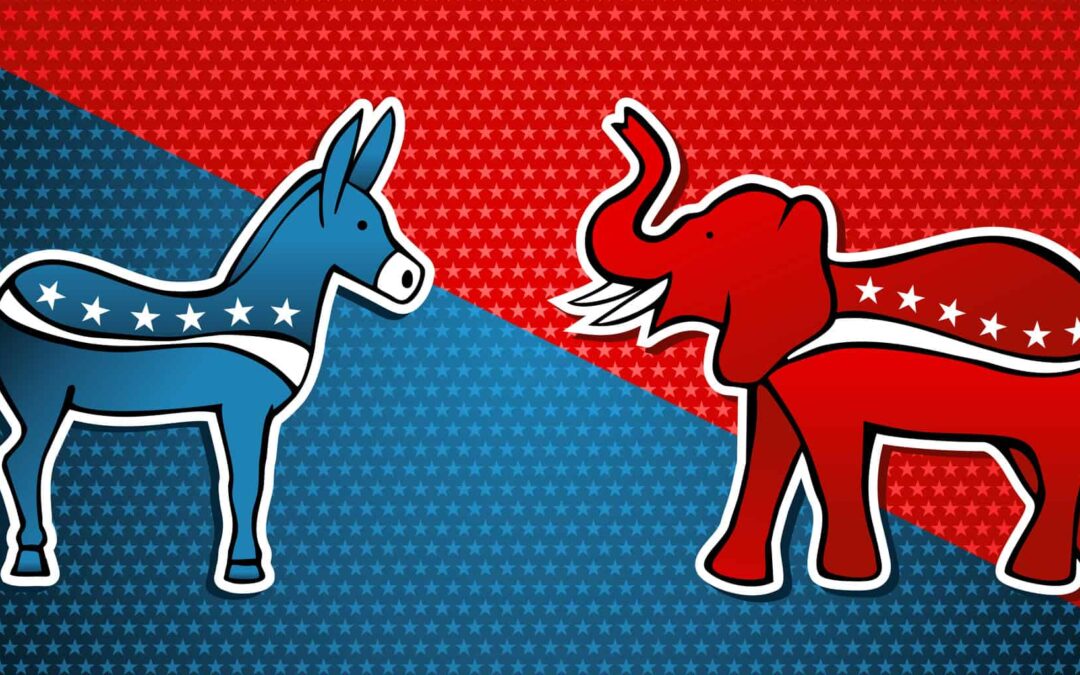
by Rebecca Hubbard | Jan 6, 2018 | Applied Principles
…Think About It
I woke up this morning and wondered what it would look like if our political parties used the principles of Natural Lifemanship to interact with each other and to do business. Think about it.
What if each party attempted to meet both their own needs and the needs of the other party?
What if each party cared about and worked for compromise and equality in their partnership?
What if each party truly understood that if it is not good for both parties, it ultimately is not good for either party? What if they responded appropriately when the other party “moved their feet”?
What if each party created space for the other party to make choices that are best for both parties? That neither party took away the choices of the other party and neither tried to control the other?
What if both were careful with their verbal and nonverbal communications with the other?
What if it were safe to make mistakes, disagree, and openly and honestly communicate ideas, needs, and beliefs?
What if each party appropriately controlled itself, and made choices using their whole brains?
What if each party respected the other party and was able to set and accept limits?
What if each party was assertive in their communication and actions and not passive or aggressive?
What if both parties were able to use the principles of pressure appropriately? That is, each party increased the pressure when the other party was ignoring. Each party maintained the pressure when the other party was resisting, and each party released the pressure when the other party was cooperating?
What would it be like?
What might we accomplish?
Rebecca J. Hubbard writes stories for children and is a master’s level licensed marriage and family therapist in Texas specializing in equine-assisted psychotherapy. More information can be found at www.rebeccahubbardlmft.com
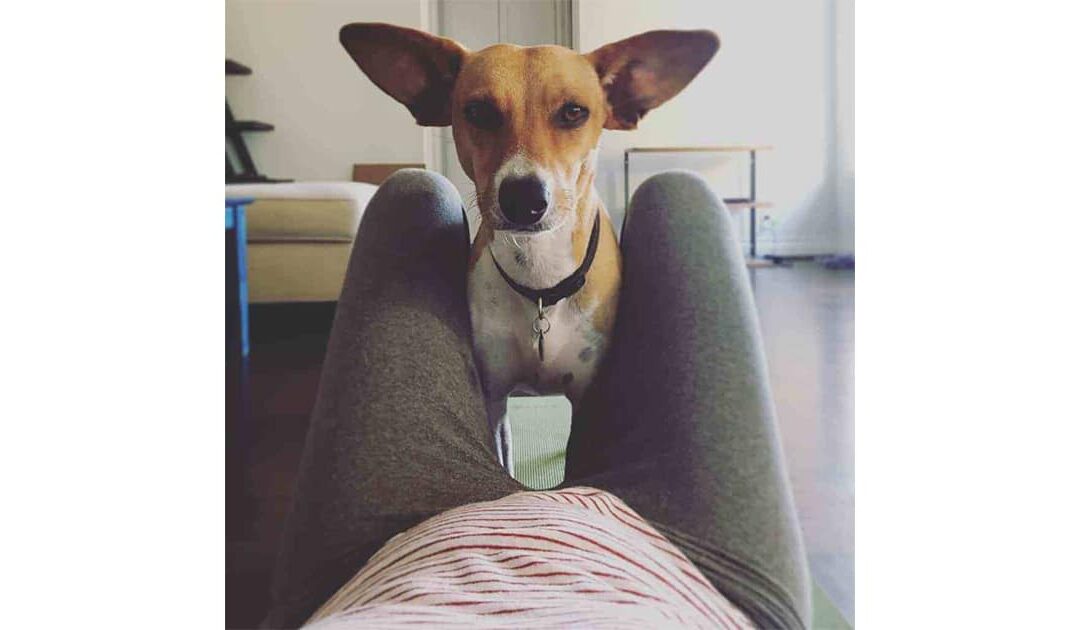
by Kate Naylor | Dec 23, 2017 | Applied Principles, Parenting and Counseling Children
Attachment Trauma
This is a story about parenting….dogs. Now don’t get me wrong – I have no intention of saying parenting dogs is like parenting kids (entirely), people are not dogs and dogs are not people. But, relationships are relationships – and if we are open to learning, we can learn MUCH from our relationships with animals.
I am a family therapist and in the last few years have ventured into the field of attachment trauma – I have learned and learned, practiced and practiced. But, it turns out; the most humbling and challenging experience for me (thus far) has been parenting a dog with attachment trauma. It makes my heart go out to those who parent children with attachment trauma – again, not the exact same thing, but, similar. Y’all, this stuff is hard, even if it is ‘just a dog’. Let me explain.
I have two dogs – Boogie and Olive. Boogie came into my life as a puppy at 8 weeks old. He started out in a loving home with his momma and has been by my side for the last 9 years. He is utterly attuned to me, cares deeply about what I think, makes requests clearly and calmly, and is easily comforted by our companionship. He is securely attached – he has no trauma around his human relationships – he is attuned and connected, easily. Olive on the other hand, was a stray. My mother took her in at her farm when she was roughly 6 months old. This is where Olive learned to play with other dogs and get along with a handful of humans; she was safe, well fed, and loved. However, she is a very different dog from Boogie. She is skittish, self-focused, is an alarmist, and warms up very slowly to new people, and only if they approach her properly. She came to live with me at about a year old, and about a year ago. She is challenging, to say the least. She is also wonderful and has stolen my heart – but that does not mean things have been easy.
So what is going on here? Why such a huge difference between the two? Olive had a warm and loving home so soon in her life – shouldn’t she adjust easily?
A disclaimer here, my areas of focus are humans and horses; but here is what I know about mammalian brains in general. They begin growing in utero, they grow in response to their environment, and they grow rapidly in the very beginning of life. In humans, 80% of brain growth happens before a child is 3 years old. Dogs grow and age exponentially faster than we do – so it would make sense that a 6-month-old dog would have experienced a significant amount of development in their brain, with much of its neural pathways already sorted out. (Especially when you think about what a 6-month-old dog is capable of, as compared to a human).
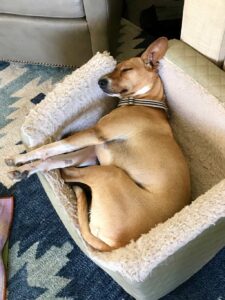 When Olive came to live with us, I spent the first few weeks feeling totally overwhelmed. I had had dogs all my life, but she was a conundrum. How can a dog be so selfish, so uninterested in my requests, so hard to soothe? Then, after too long, it hit me…duh, I have a dog with her own difficulties of attachment trauma. I had been studying this and working with families who struggled with this for several years now – but it only then occurred to me that my dog might be experiencing the same thing (it’s so easy to compartmentalize humans as being totally different from animals…but really, that’s just not the case that often). Thankfully, a light bulb went on about so many of her behaviors. For example:
When Olive came to live with us, I spent the first few weeks feeling totally overwhelmed. I had had dogs all my life, but she was a conundrum. How can a dog be so selfish, so uninterested in my requests, so hard to soothe? Then, after too long, it hit me…duh, I have a dog with her own difficulties of attachment trauma. I had been studying this and working with families who struggled with this for several years now – but it only then occurred to me that my dog might be experiencing the same thing (it’s so easy to compartmentalize humans as being totally different from animals…but really, that’s just not the case that often). Thankfully, a light bulb went on about so many of her behaviors. For example:
- Olive isn’t selfish – that’s my interpretation of her behavior. What’s really happening is she has an overdeveloped sense of survival, or in other words, the mechanisms for survival in her brain are in overdrive– so every meal, every “treasure”, every opportunity to take care of herself – she capitalizes. Survival thinking is “me” thinking – it is “how do I take care of just myself, in just this moment?” Of course she tried to eat her dinner as well as everyone else’s, and of course, she tried to horde all the treats, and push Boogie out of the way when attention was being given. She was taking care of herself, the best way she knew how. Her early experiences, likely including her intrauterine experiences, told her that survival was of the utmost importance – not relationships with others, and certainly not with humans. That only comes when survival needs are met with safety, security, and predictability. The survival, “me” focused portions of her brain were muscled up, while her relational “we” portions of her brain were underdeveloped.
- Olive isn’t uninterested in my requests – dismissing and rejecting me – she was focused on her needs and how she was going to take care of herself like she’d always done. And anyway, who was I? Some human that thought I should matter to her all of a sudden because I took her in? Humans, in general, have not been a predictable force in her life. Lately, a few had been great, but early on? As a stray I can only imagine her experience of humans – ignoring her, running her off, maybe even being the ones who dumped her in the first place. Yet, I expected her to simply trust me – based on no other reason than I thought she should. I’m pretty nice, why not? But, when people are unpredictable, the safest thing you can do is keep your distance and focus on taking care of yourself. That’s all she was doing. She doesn’t have pathways in her brain that exclaim “Yay, people!” like Boogie – her neural pathways are more likely to say, “People….hmmmmm”. So, it’s no wonder my requests were met with some dismissiveness – building a relationship in which trust goes both ways doesn’t happen overnight, especially when one party has no previous experience with trust.
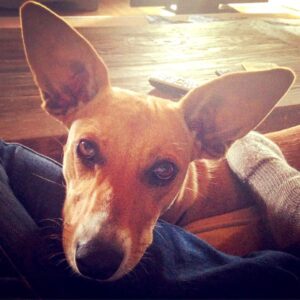 Imagine trying to ride a bike down a mountain path, when it’s your first time on a bike! You would totally fail – not because you didn’t care, but because you didn’t have the previous experience as a foundation for this new one. Neural pathways don’t change simply because circumstances change, they change over time, with practice and consistency. Just like learning to ride a bike.
Imagine trying to ride a bike down a mountain path, when it’s your first time on a bike! You would totally fail – not because you didn’t care, but because you didn’t have the previous experience as a foundation for this new one. Neural pathways don’t change simply because circumstances change, they change over time, with practice and consistency. Just like learning to ride a bike.
- Unpredictability in early life also impacts Olive’s ability to be soothed. Her life for the first 6 months, and possibly in utero as well – involved hunger, fear, and fight/flight/freeze. So her brain wired itself to be highly sensitive, highly responsive, and quick to detect threat. None of this supports a zen approach to life – it does support survival, though, and beautifully so. So
es, when a strange man walks in the house, or a big truck sits in our driveway, or we get in the car for an unknown destination – Olive is upset, and difficult to soothe. Why doesn’t my relationship with her soothe her easily? See point #2.
I cannot tell you how many mistakes I have made with Olive because I assumed she was being selfish, or rejecting, or unreasonably difficult. And knowing what I know about the brain and attachment trauma doesn’t mean I am automatically doing a better job with her. I do at times, and other times I let my feelings get the best of me. To be honest, when I really think back over all the times she and I have gotten cross-wise, most instances were my doing. Yes, she did something I didn’t like – but my impatience, my assumptions, and my big feelings are what turned a small “misbehavior” into a relational rupture. Has she been challenging? Heck yes. Has she been willfully, intentionally “bad”? Pretty much never.
We learn about each other more every day – and a year after she came into our lives she is a loving, sweet, playful friend – who also makes questionable choices and is difficult to soothe. Parenting Olive is a journey in which we both make mistakes. I am deeply grateful for the unending forgiveness she has inside of her – that fortunately, most dogs do.
The greatest lesson she is teaching me is that building a relationship with someone who has experienced attachment trauma doesn’t just take time, it takes intentionality over time. Lots of time. For she and I to be successful we need predictability, calm, intentionality, and forgiveness. Not just love – love is good, it is necessary, but it isn’t a cure all. The brain doesn’t work that way. New pathways are formed through repetition, not just good intentions.

So for those of you who are loving someone (be they four-legged or two) with attachment trauma – it is hard. It is beyond words hard. Progress is slow and certainly not a straight line. And it asks a lot of us – we have to be patient, and in control of our thoughts, emotions, and impulses. But if we expect that of them, then shouldn’t we be able to do it ourselves first? And you know what, life with Olive may never be as easy as it is with Boogie.
But I noticed something the other day. When I laugh…Olive wags her tail, and when she comes bounding into a room (she is always bounding), it makes me smile. It’s a small thing, but it’s something.
Kate Naylor is a Licensed Marriage and Family Therapist in the Austin, Texas area and a Natural Lifemanship trainer. More information can be found at www.kategosenaylor.com
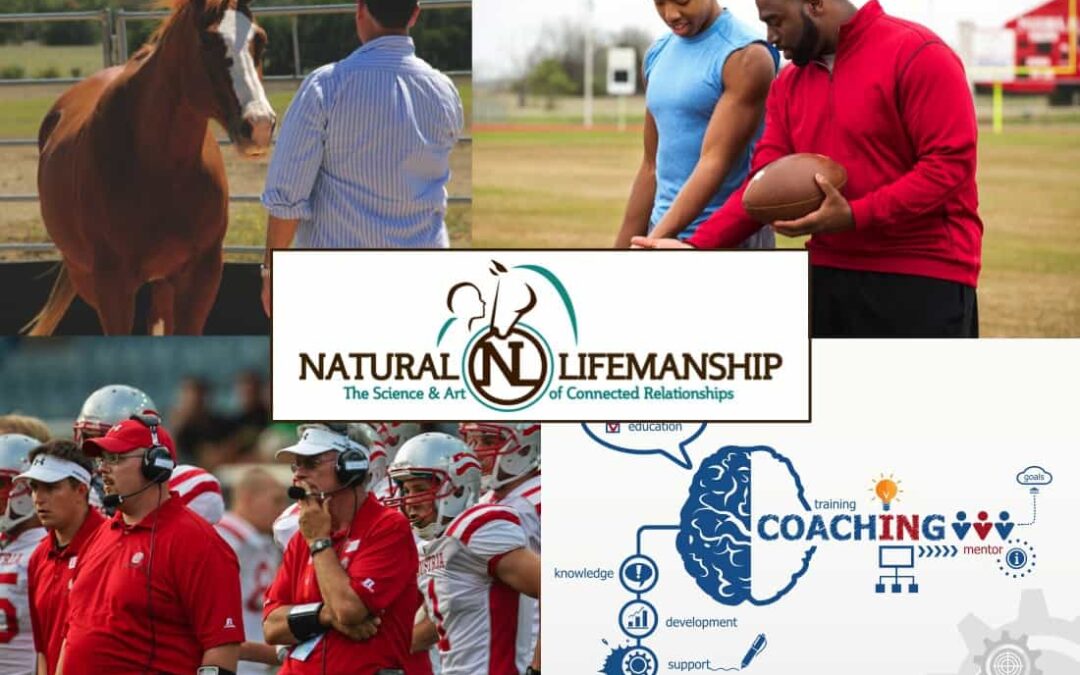
by Laura McFarland | Oct 6, 2017 | Applied Principles, Personal Growth
What does Natural Lifemanship (NL), a model that trains people in trauma-focused equine assisted psychotherapy and equine-assisted trauma informed care have to do with coaching, specifically in the sport of football? Great question.
According to my brother, a college Offensive Coordinator, NL offers coaches the skills, knowledge, and experiences needed to provide a much-desired competitive edge that will help teams perform at their highest potential. After watching my team, the Texas Longhorns (Hook ‘ Em!) make an impressive comeback this season in the first four games, yet still show opportunities for growth in very specific ways, I have to agree with my brother.
My observations in this blog are football-specific, but they actually speak to how NL is valuable to coaches in general. Different roles certainly bring different demands, which impact the specific nature of training for various sports or other professions. Nevertheless, there are certain constants that pertain to coaching.
One of these constants is that coaches want those they coach to perform and be their very best. Performing at the top of our game and living a life in which we fulfill our potential are intrinsically connected with our personal development – physically, intellectually, emotionally, and simply as human beings. Being our best and helping others to be their best means functioning optimally, and optimal functioning in all of life’s domains depends to a great degree on the optimal functioning of our bodies, brains and nervous systems. Understanding how the body, brain, and nervous system work together benefits those striving for their personal best and especially those who coach.
Another constant in coaching is that it is relational. The relationship between coaches and those they coach is understood to be instrumental in achieving the desired outcome of players performing or individuals living up to their highest potential. If this were not the implicit assumption then coaches would be out of a job. Understanding how relationships contribute to (or impede) personal or professional growth and development is a central concern of coaching. Being highly knowledgeable or highly skilled oneself does not necessarily make one effective at coaching others. A good coach has to have the ability to connect with his or her players. A great coach is a master in the art of relationship.
Whether one is a football coach, a tennis coach, a life coach, an instructional coach, or an executive coach, many of the same principles apply.
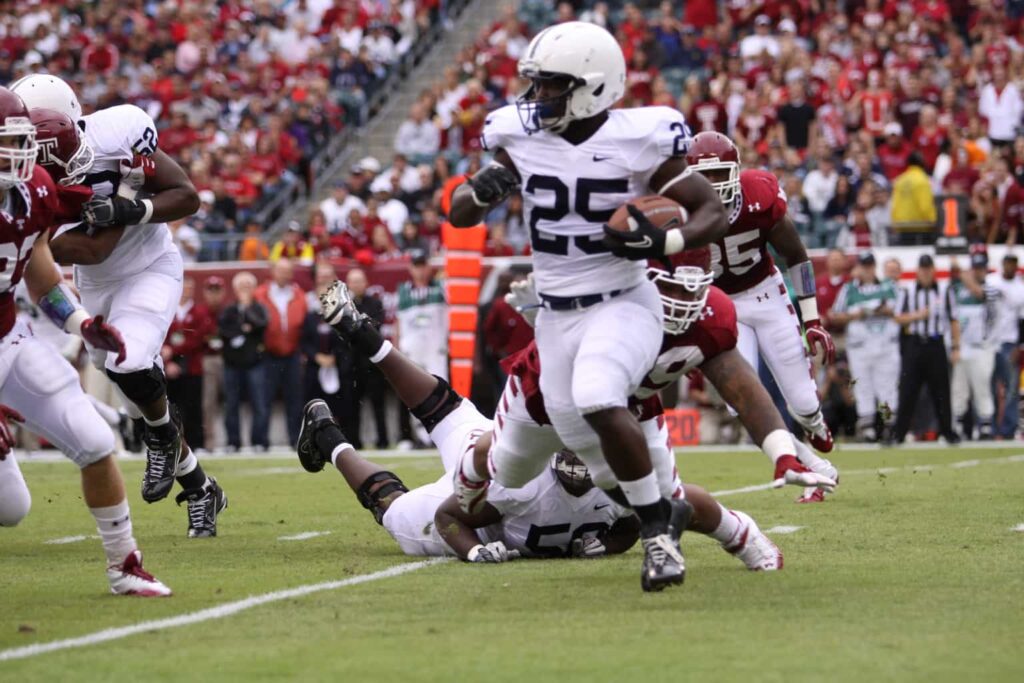
The top four reasons football coaches may wish to hone their skills through Natural Lifemanship during the off season:
1. NL gives coaches specific tools for building connected relationships while challenging players to grow.
NL teaches coaches how to push players in a way that creates stronger relationships between coaches and players and amongst the team. Nobody argues that good coaching is relational at its core. If coaches don’t earn the trust and the respect of players and aren’t able to build cohesion within their team, all the drills and training in the world won’t prepare the team to execute winning performance on the field. The challenge for coaches is to build these relationships through interactions that are necessarily going to bring out the resistance in players.
Resistance is natural and necessary for growth.
We define resistance as searching for the right answer, and any close relationship and certainly any growth-oriented relationship will eventually bring out resistance in people. If coaches never encounter resistance amongst their players, they are arguably not pushing them beyond their physical and mental limits and thus not promoting growth. On the other hand, if they push them too hard or too fast and without having built a connected relationship, the result is players may comply but only from the lower (“survival”) regions of their brains, which compromises the level of development needed for truly optimal athletic performance. NL gives coaches a neurodevelopmentally sound, principle-based set of knowledge and skills to cultivate relationships with players that result in players’ full, willing cooperation with the expectations of the relationship and not just automatic, subconscious compliance or obedience that eventually interferes with optimal performance and with connected relationship.
2. NL gives coaches a practical understanding of the brain – specifically what is required of a player, neurologically speaking – and how to prepare players to perform at their highest level.
Clearly a good football player has to be athletic and physically well trained but they also have to be present and have their entire brain engaged during a match. They need well developed and integrated pathways between the brain’s lower, automatic reactive regions responsible for survival and its upper, thinking, planning, and strategizing regions, as well as the mid brain regions responsible for relationship and connection with others.
Think of what is required of players. Good players must:
1. quickly and agilely react and move on the field
2. while exercising an acute awareness of space and perception of fast moving and often unpredictable stimuli on multiple collision paths
3. while making split second decisions
4. while experiencing a heightened sense of threat and often physical pain
5. while staying connected and aware of one’s team – moving and reacting in a coordinated way with one’s teammates
6. while maintaining a high level or strategic awareness of the match as a whole (the score, how many time outs are left, how much time is on the clock, what half and quarter and down it is, what are the strengths and weaknesses on the other team, etc.) so that split second decisions are not simply reactive but are also strategic in nature
7. and, they must be able to produce an intensely high level of explosive body energy while staying mentally calm and connected in the present moment
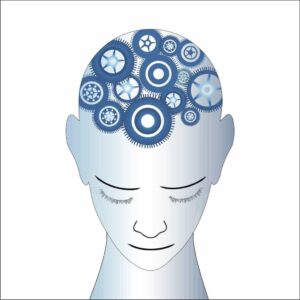
Football is thus very demanding when played at the highest levels. The list above specifies several discrete competencies that are involved when the ball is in play. At any moment multiple regions in the brain must be activated, functioning optimally, and communicating efficiently with other areas of the brain to execute quick, explosive action coordinated with calm planning and purpose.
By way of example, let’s say a team is ahead by one goal and there are only a few seconds left in the second quarter. The offense is in the lead. The wide receiver who catches the pass on the opponents’ 30 yard line starts running toward the goal. Naturally, his adrenaline is rushing and his single-minded impulse is to run as fast and far as he can to reach the goal, which seems deceptively near. However, given the circumstances, a better decision would be to run out of bounds giving his team the opportunity to score a field goal and gain a 10-point lead before the second half. The impulse to run toward the goal and the decision to run out of bounds are naturally exclusive of one another. They actually activate different neural networks in the brain. The ability to act according to strategic judgment that goes against one’s impulses is the hallmark of self-regulation, which requires integration or well developed pathways between the reactive lower regions of the brain and the thoughtful, problem-solving neocortical regions. Knowing this and observing this player’s behavior, a coach could determine that what would be helpful moving forward is helping the player reinforce self-regulation neural networks through specific exercises that have that effect.
NL gives coaches the tools they need to intentionally train players with the experiences needed to build and reinforce integrated networks in the brain that allow them to execute peak performance during a game.
3. NL gives coaches a trauma-informed lens that allows them to understand and work effectively with individual players who show up with histories that impact their abilities to perform and to relate in desired or optimal ways.
Trauma is understood today very differently than it was in the past. We now understand that multiple “little” or complex traumas – chaos, unpredictability, hurts, insults, neglects – especially relational ones – throughout childhood cause children to adapt in ways that alter their developmental trajectory over time. Behaviors that serve to protect people when they are faced with genuine threat are adaptive in the sense that they ensure our survival. As young adults on a football team or in a classroom or in the community at large (wherever a genuine threat is no longer present), these adaptive behaviors often become maladaptive. Maladaptive (i.e., situationally inappropriate and damaging) patterns of behavior get players into trouble and sometimes kicked off the field and off teams. Coaches are well served by having a trauma-informed lens, which comes from an understanding of neurobiology and how traumas (little or big) impact it. This will help coaches understand and work with players who are easily triggered, reactive, impulsive or otherwise impeded by behaviors that don’t serve them or their team well. Coaches can use the principles of NL to help players overcome those patterns through new relational experiences. Coaches must be equipped to respond effectively to players when they behave in ways that damage their relationships with others or with themselves.
4. Coaches need practice, too. Coaching is an art as much as it is a science. Because it involves relationship and relationships are dynamic and highly individual in nature, good coaching is not something that can be learned and developed at the intellectual level alone. By employing horses in our trainings for coaches, coaches have the opportunity to practice embodying what they learn through interacting mindfully with a horse. Horses are known for giving honest feedback because they don’t respond to our words or even our outer actions. They respond to what they sense from our body energy, something we are often unaware of ourselves. In the same way, good coaching requires a coach be mindful and attuned to their players. NL provides a powerful training experience to cultivate knowledge, mindfulness, and attunement that give coaches the edge they need to be more effective with those they coach.
For more information on NLR – our line of trainings and certifications for coaches – Contact Us
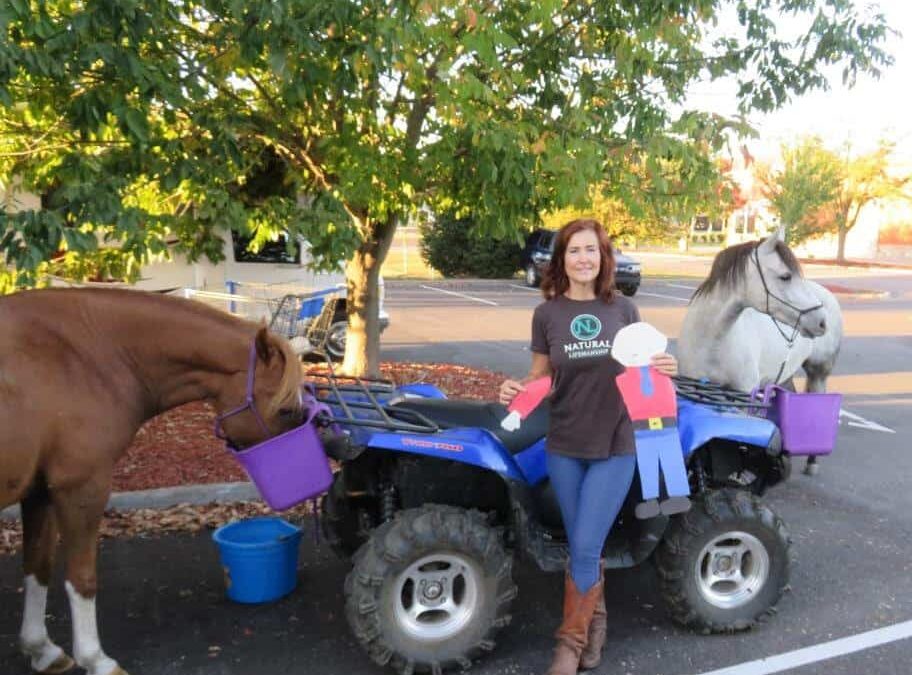
by Kimberly Highland | Oct 6, 2017 | Applied Principles
According to Chief, the entire fiasco started the day before when Flat Stanley swore an oath of revenge against Chief just because he accidentally ripped Flat Stanley’s arm off. Chief claims he’d only meant to nibble some affection on Flat Stanley; he’d had never met a boy made of paper before.
The morning started just as every morning of our nearly 2,000-mile drive from South Dakota to the Deep South. I led one pony into the trailer (ensuring no mountain lions had smuggled themselves into the stalls) while Scott stands with the other outside. The morning of concern was Chief’s turn to go first, while Rusty the True waited patiently outside.
Once I fastened Chief’s lamb’s-wool halter (safeguarding against abrasions and split ends) to the trailer sidewall, I turned about face—addling my way toward Rusty the True.
SNAP! WOOSH! BLUR!
That’s all she wrote. Chief left me in the dust of pine shavings and poo, flicking his tail at Scott and Rusty as he bee-lined for six lanes of traffic. I flailed about like Henny Penny with her comb on fire for a second or two and then made haste with my wattle to the wind, chasing Chief in near hysteria. Scott stood stock still next to Rusty watching the terror unfold, like the Tin Man waiting for his new-found heart to stop hammering in his bolted-down chest. Rusty and Flat Stanley stood quietly.
Fortunately, there was a 25-foot swath of lush green grass between the Wally-World parking lot where we’d nighted and the morning-traffic-mottled freeway. Still, if I got within 12 feet of Chief, he’d turn his ample rear to me and dash toward a 12-car-pile-up-in-the-making. Several times he hoofed along the pavement. His message couldn’t have been clearer if he held a knife to his throat and shouted to me, “Don’t make me do it. I’m serious; I’ll do it, and it’ll be all your fault.”
Finally, my brain caught up with my burning comb and waving wattle, and I remembered The Principles. When inviting another to connect, ignore=increase pressure, resist=maintain pressure, cooperate=release pressure. Chief was definitely resisting, and I’d been increasing pressure. A sure-fire recipe for an explosion. These are the fundamental principles for all relationships, and the foundation of our Faith, Hope, and Love trauma-informed care, learned and honed through Make Way Partners relationship with Natural Lifemanship.
As soon as I dropped my shoulders and took a deep breath, the flame blew out of my comb and my wattle stopped quivering. Chief immediately raised his head from the grass and set his bead dead on me. I moved too fast, and he decided I wasn’t serious about connecting, but rather had ulterior motives. Chief was off again. Hoofing the pavement, testing my calmness.
By this time a RV-ing couple, pulled to the side of the road, offering assistance to trap the poor beast. A stray bicycler kicked in a similar offer. I firmly asked them to stay far away from my thunder-cloud of a horse, and focus their attention on warning oncoming drivers of the danger.
With a prayer of surrender, I applied a fraction of pressure on Chief by focusing my eyes and energy from my core onto his backside. Without the slightest hesitation, Chief turned gracefully toward me. I took a small step backward, releasing pressure, and he took a larger step toward me. We repeated this five or six steps, until Chief caught me.
For the record, Flat Stanley flatly denies ever having made a threat against Chief. “Besides” Flat Stanley crooned, “My arm is too sore from all the stitches Kimberly threaded into me to get my arm back on to have flapped around and spooked that big oaf of a horse.” I sensed a bit of resentment with the name calling.
Chief maintains that Flat Stanley did, in fact, spook him as soon as I turned my back in the trailer, otherwise—he claims—he never would have startled and run.
Rusty the True, being the consummate Peace Maker of the Traveling Trio, settled the matter by reminding us all that placing blame or nailing down causation is—at best—unproductive. Instead, Rusty pointed out that we should simply “Apply Grace and Allow Do-Overs.”
Love, your sister along the journey, +k

by Bettina Shultz-Jobe, LPC, NBCC | Aug 7, 2017 | Applied Principles, Basics of Natural Lifemanship
Today is August 7th. August 7th, 2010, Tim and I were married. We had a sunrise wedding at the family ranch in the Texas Panhandle. It was outside on a plateau, overlooking a beautiful canyon, so sunrise was about the only time of day we could lessen the chances of enduring the kinds of winds that blow houses over the rainbow!
We did our first dance horseback to the song “I Run to You” by Lady Antebellum, and I almost fell from Zeus, my trusted steed! We shared a communion of coffee and homemade biscuits with friends and family during the ceremony. We then had tequila sunrises and a delicious chuck wagon breakfast, prepared by a dear friend. The day was perfect!
It is practically impossible to think about our wedding and engagement, without thinking about our business, our first “baby.” The weeks prior to our wedding we built a website, with the help of my brother in law, and started a business. We simply can’t separate ourselves or our relationship from Natural Lifemanship and the idealized belief system at its foundations.
A few years ago, Tim and I wrote the statement you will read below. Natural Lifemanship has grown well beyond the two of us, but these beliefs are the hands that continue to hold us personally and professionally. They are still the touchstone of Natural Lifemanship’s principle-based and process-oriented model of therapy.
We are terribly imperfect at practicing what we believe and what we teach. Tim and I are quite complicated human beings, with all kinds of baggage, and a fly on the wall would attest to how inadequate our best is in the hardest of times. Actually, our closest family and friends can attest to this wholeheartedly, I’m sure.
We are so very different from each other, and there is a rub that doesn’t work each and every moment but does seem to work out most days. So much has changed for us in the last 7 years, but what we believe has not, and our daily choice to try our darndest to care more about relationships than anything else remains.
The statement below is what our certification students agree to before they complete certification in Natural Lifemanship. Today, Tim and I reflect on how these beliefs have affected our relationship, our mission, and our passion, and feel blessed to be part of a community that chooses to attest to such a statement. . . and humbled by the many people whose work and heart have contributed to our mission. . . and by each moment’s grace to change, grow, and, above all, connect.
NL Ethics and Beliefs Statement:
As a person certified in Natural Lifemanship I attest to the following: I believe the most important thing in life is connected, attuned relationships with self and others (including relationship with animals, my Creator as I understand him or her, nature, the universe, etc.) All of life’s healing happens in the context of attuned relationships based on trust, mutual respect, appropriate intimacy, and partnership. I believe strength is found in vulnerability, and that conflict in relationships can be opportunities for growth that can strengthen the relationship. Therefore, regardless of the task or activity, a connected relationship with self and others is always the goal.
I believe that a partnership can happen when each party seeks to control themselves only, and true partnership happens when each party appropriately controls themselves for the good of the relationship. I believe that if it’s not good for both, it’s eventually not good for either and that a one-sided relationship is damaging to both parties.
Regardless of what is going on around me, it is possible to control what is happening inside of me. Relationship with others, quite simply, flows out of the relationship with self (what we sometimes call regulation or my way of being in the world). Therefore, WHO I am is more important than WHAT I do. I realize that I can’t teach someone to do something I can’t do. Likewise, I can’t teach someone to live a life that I don’t live. As a result, personal growth becomes the foundation for ethical therapy. The most important thing is to do my best to do what is right for my client. I understand that what is best may not be what is easiest. In order to do what is right for my clients, I have to know myself – my biases, my blindspots, and at the moment, I have to be connected with my own reactions and impulses so I can filter them. Only then can I do what is actually, truly best for my client. The team approach in NL affords me the opportunity to model a relationship where the NL principles play out and provide a space for the therapy team to notice and discuss biases and blind spots. It is, therefore, my ethical obligation to foster a healthy relationship with my therapy partner. Clinical consultation is a regular part of ethical practice, especially if I am working alone in therapy sessions.
I believe animals are sentient beings, who have relational and thinking capabilities, and can be capable of partnership if given the chance to develop. I believe that a good principle is a good principle regardless of where it is applied. Therefore, all NL principles apply equally to relationship with self and others. The relationship between horse and human is a real relationship in which relational patterns emerge, just like in any other relationship.
When NL certified, I become part of a community of individuals who are deeply committed to connecting with self, connection with others, and who strive for connected relationships the way it was intended. As such, this community of practitioners strives to foster relationships that bring about healing for self, others, and the animal partners with which we work.
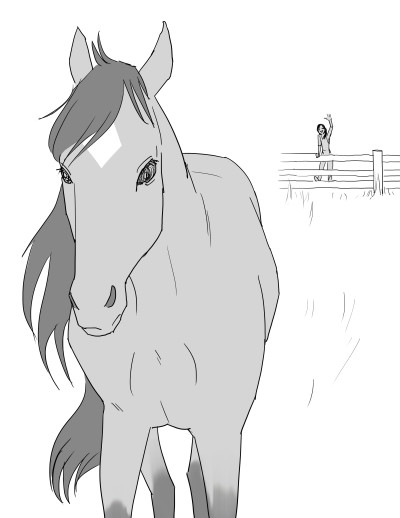
by Rebecca Hubbard | May 12, 2016 | Applied Principles
Rhonda Smith is the CEO and founder of Spirit Reins, a non-profit that provides treatment to children and families who have experienced traumatic events. She interviewed Buck, the main character in the book, The Gift, at his home pasture for Spirit Reins’ Amplify Spirit Reins campaign for Amplify Austin. Alicia Nance is Buck’s friend and lends a hand as a translator.
Rhonda: Buck, thank you for joining us via satellite for Amplify Spirit Reins. The weather looks gorgeous up there in North Carolina.
Buck: You are welcome Rhonda. I’m happy to do it and glad to help out a friend of Pip’s. The sun is shining today. It is very, very warm here. I like to stand down by the lake where the wind is a little cooler.
Rhonda: It is warm here as well. What do you think of the story that The Gift tells?
Buck: I think it is an important story that helps folks understand that just because they think something is one way doesn’t mean it is. All that time Pip thought I was a mean ol’ guy, and I’m not. I think that having friends and knowing how to make them is important. The part that I think is the most important for horses is we don’t like to be alone. We want to be with our herd—that’s where we feel the safest.
(more…)



 When Olive came to live with us, I spent the first few weeks feeling totally overwhelmed. I had had dogs all my life, but she was a conundrum. How can a dog be so selfish, so uninterested in my requests, so hard to soothe? Then, after too long, it hit me…duh, I have a dog with her own difficulties of attachment trauma. I had been studying this and working with families who struggled with this for several years now – but it only then occurred to me that my dog might be experiencing the same thing (it’s so easy to compartmentalize humans as being totally different from animals…but really, that’s just not the case that often). Thankfully, a light bulb went on about so many of her behaviors. For example:
When Olive came to live with us, I spent the first few weeks feeling totally overwhelmed. I had had dogs all my life, but she was a conundrum. How can a dog be so selfish, so uninterested in my requests, so hard to soothe? Then, after too long, it hit me…duh, I have a dog with her own difficulties of attachment trauma. I had been studying this and working with families who struggled with this for several years now – but it only then occurred to me that my dog might be experiencing the same thing (it’s so easy to compartmentalize humans as being totally different from animals…but really, that’s just not the case that often). Thankfully, a light bulb went on about so many of her behaviors. For example: Imagine trying to ride a bike down a mountain path, when it’s your first time on a bike! You would totally fail – not because you didn’t care, but because you didn’t have the previous experience as a foundation for this new one. Neural pathways don’t change simply because circumstances change, they change over time, with practice and consistency. Just like learning to ride a bike.
Imagine trying to ride a bike down a mountain path, when it’s your first time on a bike! You would totally fail – not because you didn’t care, but because you didn’t have the previous experience as a foundation for this new one. Neural pathways don’t change simply because circumstances change, they change over time, with practice and consistency. Just like learning to ride a bike.






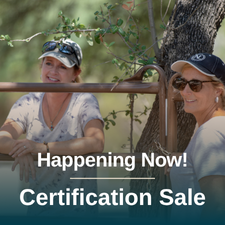
Recent Comments